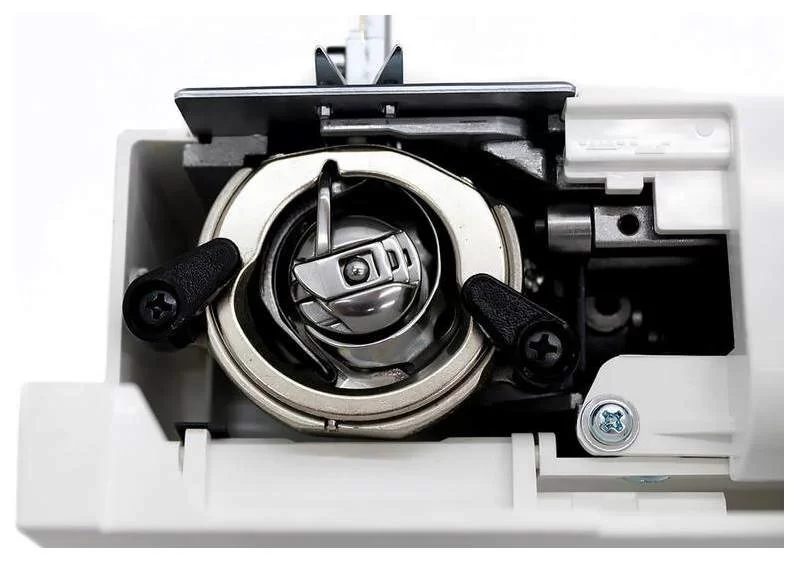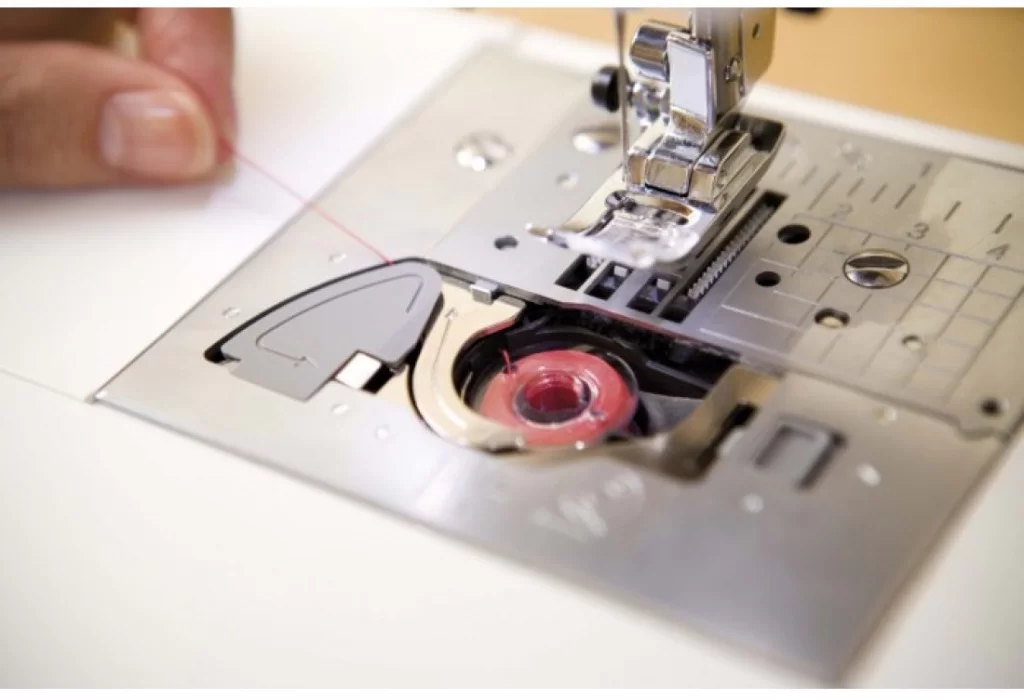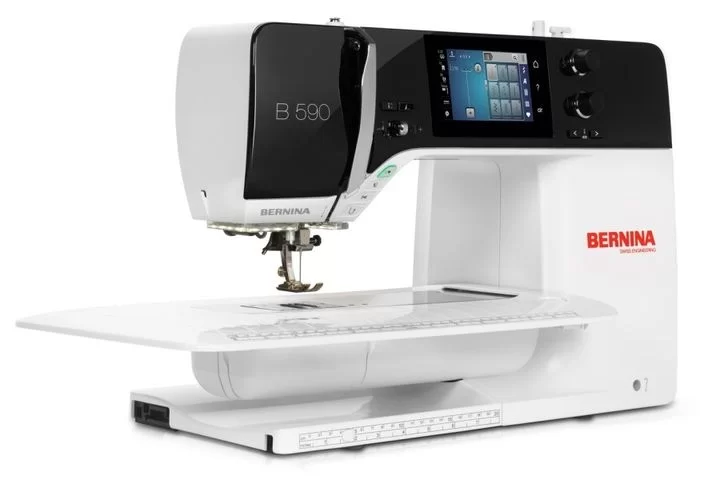
Which shuttle is better — vertical or horizontal
The shuttle mechanism is the heart of any sewing machine. It is from the design features of the shuttle that the most important characteristics of the device directly depend — speed, noise level, efficiency. In everyday life and industry, 2 main types of shuttles are used — vertical and horizontal. Each of them has both strengths and their own specific features. In what way do they appear? Which element is more reliable and functional. Answers to all questions below.
Vertical: types, features

For sewing machines, 2 types of vertical shuttles were created — swinging and rotary. The first variety, also known as pendulum, was the first of its kind: for many decades, such elements have been successfully used in most household products.
During operation, the crescent-shaped element moves in a reciprocating manner — in fact, it oscillates like a pendulum (one movement of the needle up and down — shuttle half a turn in each direction). And this, unfortunately, leads to a technical problem with the vertical shuttle.
The fact is that the pusher changes the movement of the element very quickly and at the moment it returns to its initial position, the mechanisms moving it experience significant overload, quickly wearing out. And as the working mechanisms wear out, the level of noise they produce increases. And the shuttle pusher plate is not particularly durable: all because of the frequent shock load.
Separately, it is worth mentioning the difficulties in setting up the pendulum shuttle. In the process, many parameters have to be taken into account so that gaps, thread breaks, etc. do not form during the creation of the line. In addition, there are many more little things that nevertheless have a significant impact on the “operability” of the vertical shuttle. For example, if you constantly pull the fabric while working on a typewriter, notches will appear on the surface of the element and its nose.
But if we talk about the most modern models of sewing machines, they are devoid of such a problem: all the working units of such devices are securely fixed, and the need for adjustment disappears by itself.
Now about rotational views of vertical elements. A similar working element is present in high-end products. It is he who is often used in industrial varieties of sewing machines. The principle of operation is simple: in the process of interaction with the machine needle, the shuttle performs a circular rotation.
The main advantage of the rotary element is the acceleration of the sewing machine. For example, in factories, machines run at such a speed that the needles can melt. The pendulum shuttle would simply shatter into pieces from the load. The vertical rotary element does not need to be disassembled: it is enough to regularly lubricate its rubbing parts.
Vertical working units have an undeniable, main advantage over horizontal ones — the shuttle shaft is connected to the main securely fixed metal levers. This allows the device to withstand significant loads. Yes, machines with a pendulum element do not have a high speed of operation, but this is offset by 3 advantages:
-
Reliability of working units;
-
Durability of the device;
-
Affordable price.
Horizontal: principle of operation, advantages

The first thing worth mentioning is that the horizontal shuttle almost entirely consists of metal (with the exception of only the bobbin insert that replaces the cap — it is made of plastic). Since the bobbin does not have a cap, it is inserted directly into the hook. It’s simple, effective and very convenient: you can always see the amount of thread left, the color and even how to remove it.
Horizontal units are rotary elements and work by constantly directing movement during operation. Such a system is more advanced than in devices with vertical shuttles: the transmission gears are completely protected from shock loading, thereby almost completely eliminating wear.
The device is highly functional throughout the entire operational period of the sewing machine. The shuttle does not need to be disassembled: it is enough to lubricate its mounting axis every six months. The horizontal element provides the sewing machine with noiselessness during operation. This is achieved through the use of a belt drive, as well as the use of plastic in the production of other elements, in addition to the shuttle.
The bobbin case deserves special attention: it is securely fixed during the normal operation of the machine. The needle can only hit it if the fasteners are damaged. And this is possible only with incorrect human actions. For example, an incorrectly fastened thread can become tangled. If the shaft spins at the same time, there is a high probability of deformation of the stop — the holder’s spool will simply turn.
Horizontal nodes have a couple of specific features. First, the lower thread is rather inconvenient to adjust. To tighten the desired nut, you have to get to the shuttle itself. Secondly, horizontal modifications do not allow any initiative: self-replacement of a worn-out element is possible in rare cases — you can change it to a new one only in special service centers.
Important! Horizontal shuttles are made from a single piece of plastic. And, although it is particularly durable, you should not abuse it using coarse threads. Elastic, thin threads are more suitable for such elements. Otherwise, strong friction on the shuttle is inevitable, which sometimes leads to the formation of grooves on its surface.
The main advantages of horizontal rotary shuttles:
-
Noiselessness;
-
Smooth running;
-
High quality sewing.
Shuttle boats and related myths
-
Myth No. 1. Vertical shuttles are more durable due to the material from which they are made (supposedly metal is more reliable than plastic). As practice shows, there are more problems with metal vertical ones than with plastic horizontal ones. Everything is decided by the specifics of the element device.
-
-
Myth #2: Thread tension can only be adjusted in the vertical hook. Fundamentally wrong statement. Adjusting the thread tension on the bobbin case for vertical and horizontal shuttles is exactly the same. But there is a caveat: rotary shuttles are less sensitive to changes in thread tension (we are talking about both horizontal and rotary vertical options).
-
-
Myth #3: Devices with a horizontal shuttle cannot handle thick fabrics. Horizontal shuttles are quite capable of handling fabric of any density. The main thing is to install a needle of sufficient thickness. Moreover, many models of sewing machines with horizontal hooks have a more advanced feed system.
-
-
Myth #4: The bobbin insert is expensive and wears quickly compared to the bobbin case. Fundamentally wrong. The operation of the device decides everything: if the sewing machine is handled correctly, the insert will last no less than the cap. In service centers, models of machines with original bobbin inserts are listed for maintenance, the service life of which reaches 20 years.
Comparative characteristics

|
|
|
|
|
Operating comfort
|
To change the bobbin, you need to constantly remove the entire assembly from the shuttle
|
The process of controlling the machine is very simple: the bobbin is easy to refill, and the transparent cover provides control over its condition.
|
|
Thread tension adjustment
|
A special screw located directly on the cap allows quick adjustment of the thread tension.
|
To adjust to the optimum setting, you will need to remove the needle plate
|
|
Noise and vibration
|
The reciprocating movements of the shuttle create a loud rattling sound due to the intense friction of the parts.
|
The movement of the element is perfectly balanced, so vibrations and generated noise are minimal.
|
|
Reliability
|
All work units are made of metal
|
All parts, with the exception of the bobbin case, are made of metal. The cap is made of durable plastic, but in terms of stability, nevertheless, it loses to metal.
|
|
Work speed
|
High speed of operation is unattainable due to the design features of the shuttle
|
In theory, the speed of the bobbin is unlimited.
|
|
Service
|
Requires regular lubrication of the element to avoid rapid wear
|
Efficient operation without regular lubrication.
|
Добавить комментарий
Для отправки комментария вам необходимо авторизоваться.